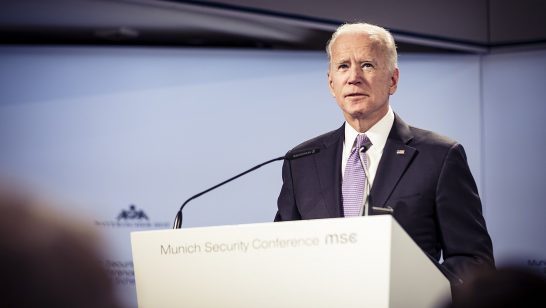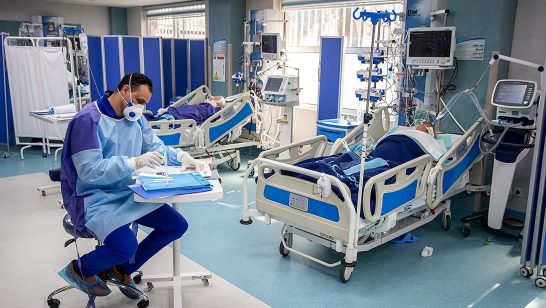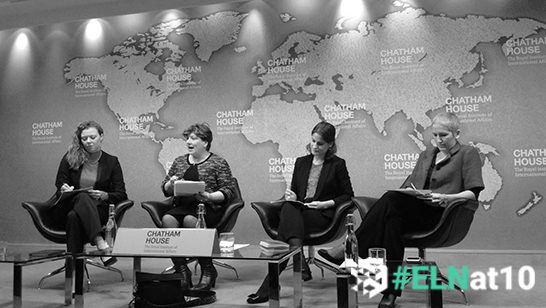
By appealing to emotions rather than to rationality, Prime Minister Netanyahu, in his March 3 address to the U.S. Congress, made an explicit attempt to torpedo a negotiated solution to end the Iranian nuclear crisis. Netanyahu’s address comes at a crucial moment because an unprecedented E3+1 dialogue with Iran could possibly be on the verge of bearing fruit. Paradoxically, an attack on the deal comes from the country which, more than any other, is legitimately concerned by the Iranian nuclear program and the country which would benefit most from an arrangement preventing Iran from possessing nuclear weapons. In his address, Netanyahu admitted that “no country has a greater stake than Israel in a good deal that peacefully removes this threat”. He also clearly indicated his view that the negotiations would result in “a bad deal”.
Because the negotiations are presently in full swing, it is difficult to judge whether the deal being discussed is a good or a bad one. However, the present opportunity is unique, a first instance in which a country, having mastered uranium enrichment technology and being suspected of aiming at a weapons program, can be peacefully preempted from crossing the nuclear weapon threshold through ad hoc consensual restrictions on its nuclear activities. In the recent case of the DPRK and in the preceding cases of India, Israel and Pakistan, attempts to agree on such restrictions were unsuccessful. Moreover, a positive result from negotiations with Iran would set a precedent for the establishment of a new international standard for countries wishing to venture into to the complex world of uranium enrichment.
One cannot exclude that, in the back of their minds, some Iranian leaders toyed with the idea of making Iran a state possessing nuclear weapons. That probably includes Shah Reza Pahlavi, under whose rule the Iranian nuclear program was launched. Nor can it be excluded that before 2003 Iran might have conducted experiments with military implications. The nature of the possible military dimensions of its past research must be clarified by Iran with the IAEA. But a retrospective investigation is not as important as the preemption of any possible future diversion of nuclear materials or knowledge to produce nuclear weapons. Such a guarantee must be ironclad and this should be the main concern of the international community and of the negotiators.
In his Washington speech, Netanyahu mentioned two major concessions allegedly made by the negotiators. The deal, in his view, would leave Iran with a vast nuclear infrastructure, providing a short time break-out path to the bomb. The Prime Minister also lamented that “virtually all the restrictions on Iran’s nuclear program will automatically expire in about a decade”. This would allow Iran “to build a huge nuclear capacity that could produce many, many nuclear bombs”.
These concerns are legitimate and they are certainly being addressed in the negotiations. In order to prevent the “huge nuclear capacity” mentioned by Netanyahu, the agreement should indeed establish a correspondence between Iran’s production of enriched uranium and its practical needs. Fortunately, Iran’s needs for the coming years are rather limited: its sole nuclear power plant in Bushehr by contract must be fueled by Russia at least until 2021. Russia would probably be more than happy to prolong the arrangement. It will take at least a decade for Iran to build its planned additional nuclear reactors which would justify a higher production of enriched uranium. The Iranians are certainly aware that the new reactors might never see daylight if the present negotiations fail. A significant reduction of the number of operating centrifuges and of their output during the years in which Iran’s practical needs will be low is both necessary and feasible. However, what really counts more than the number and the production output of Iran’s centrifuges is preventing the accumulation of Iran’s enriched uranium stockpile. It should constantly be kept at a low level and burnt in the reactors as soon as possible after production. These criteria should apply not only to Iran, but to all countries engaged in uranium enrichment.
Assuring an appropriately long break-out time, i.e. the time it takes to amass enough weapons-grade uranium or plutonium for a nuclear bomb, is also a legitimate concern voiced by the Israeli Prime Minister. However, the quantity of uranium in Iran’s possession cannot be the only parameter to calculate the break-out potential. The estimate should also take into account the time it would take to fashion the fissile material into a nuclear weapon. Nuclear testing should also be considered in this calculus. All countries which developed and declared nuclear weapons possession have done so after a substantial number of nuclear tests. Iran would be no exception. With today’s technology and institutional arrangements, a nuclear test and even its preparations cannot be concealed, especially by a country under tight international scrutiny.
There is no evidence that Iran is close to the testing stage, nor should it be allowed to reach that stage. But in order to reassure the international community on this crucial point, the Iranian authorities should muster the political courage to ratify without preconditions the treaty prohibiting nuclear testing, the Comprehensive Nuclear-Test-Ban Treaty (CTBT). This bold gesture would confirm the peaceful nature of Iran’s nuclear program and become a watershed not only for the present negotiation, but for the whole Middle East. Israel might be induced to follow suit. Both Israel and Iran are no strangers to the CTBT: both have actively participated in the crafting of this treaty in Geneva, both were among its first signatories on 24 September, 1996, and both belong to the so called “Protocol 2 countries” whose ratification is indispensable for the entry into force of the Treaty. Iran’s CTBT ratification would also give an impulse and a new direction to the presently stalled process leading to the establishment of an area free of weapons of mass destruction in the Middle East, which in turn would contribute to the survival of the Nuclear Non-Proliferation Treaty as a pillar of international peace and security and give a boost to its Review Conference scheduled in May in New York.
The opinions articulated above represent the views of the author(s), and do not necessarily reflect the position of the European Leadership Network or any of its members. The ELN’s aim is to encourage debates that will help develop Europe’s capacity to address the pressing foreign, defence, and security challenges of our time.



